| Date | Text | |
|---|---|---|
29 Aug 1632
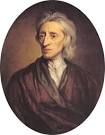
John Locke |
birth John Locke Born 29 Aug 1632; died 28 Oct 1704 at age 72. English physician who was the most important philosopher during the Age of Reason. He spent over 20 years developing the ideas he published in most significant work, Essay Concerning Human Understanding (1690) which analysed the nature of human reason, and promoted experimentation as the basis of knowledge. He established primary qualities, (ex. solidity, extension, number) as distinct from secondary qualities identified by the sense organs (ex. colour, sound). Thus the world is otherwise silent and without colour. Locke recognised that science is made possible when the primary world mechanically affects the sense organs, thereby creating ideas that faithfully represent reality. He was an acquaintance of Robert Boyle. |
|
29 Aug 1712

Gregory King |
death Gregory King Gregory King, English statistician (born 1648) |
|
29 Aug 1741

Pluto |
Pluto (astronomy) Pluto (not known at the time) reached perihelion (closest approach to the Sun). |
|
29 Aug 1749

Sir Gilbert Blane |
birth Sir Gilbert Blane Born 29 Aug 1749; died 26 Jun 1834 at age 84. Scottish physician who, when head of the Navy Medical Board, required (1795) a diet including lemon juice on navy vessels, which virtually eliminated scurvy and its significant lost manpower due to sickness of sailors. The value of citrus juice had been established by James Lind, with his Treatice on Scurvy (1754). Blane also improved sanitary conditions in the Navy by providing supplies of soap and medicines, and was involved with designing rules that were precursors to modern quarantine conditions. He required every surgeon in the service to make regular returns or journals of the state of health and disease onboard their ship. In 1829, he established a prize medal as an incentive for the surgeon producing the best journal. |
|
29 Aug 1797
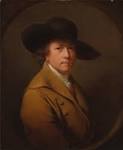
Joseph Wright |
death Joseph Wright Joseph Wright, English painter of scientific subjects (born 1734) |
|
29 Aug 1809

Oliver Wendell Holmes |
birth Oliver Wendell Holmes Born 29 Aug 1809; died 7 Oct 1894 at age 85. American physician and writer was best-known as an essayist-poet, but in medicine was famous for his 1843 article 'The Contagiousness of Puerperal Fever,' concerning the high mortality of women giving birth in hospitals. He asserted that the infection was carried from patient to patient by physicians and nurses. Because that defied the conventional wisdom, he received abuse from the obstetricians of the time. (A few years later, Ignaz Semmelweiss demonstrated the importance of hand-washing and hygiene. Before them, John Burton in 1751, and Charles White in 1773 had suspected the role of medical attendants.) Holmes coined the term “anesthesia,” from Greek words meaning “no feeling”. He was the father of the Supreme Court judge of the same name. |
|
29 Aug 1809
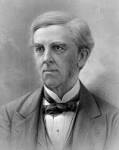
Oliver Wendell Holmes, Sr. |
birth Oliver Wendell Holmes, Sr. Oliver Wendell Holmes, Sr. (died 1894), physician and writer. |
|
29 Aug 1821

Louis Laurent Gabriel de Mortillet |
birth Louis Laurent Gabriel de Mortillet Born 29 Aug 1821; died 25 Sep 1898 at age 77. French anthropologist who was the first to organize man's prehistoric cultural developments into a sequence of epochs. Based on the idea that older specimens of man were more primitive structurally and culturally, he created a ladder-like model of the evolution of man. This model was the basis for the idea of linear evolution of men. This classification system was further detailed in 1882, in Le Prehistorique: antiquite de l'homme (The Prehistoric: Man's Antiquity). His classification system continued to be the basis for anthropological classification into the 1900's. For example, he ordered the Paleolithic (Stone Age) epochs into Chellean, Acheulian, Mousterian, Solutrean, Magdalenian, and so on. |
|
29 Aug 1828

Brake patent |
Brake patent In 1828, the first U.S. patent for a brake of any kind was issued to Robert Turner of Ward (now Auburn), Mass. This was for a "self-regulating wagon brake." |
|
29 Aug 1831

Faraday experiment |
Faraday experiment In 1831, Michael Faraday wound a thick iron ring on one side with insulated wire that was connected to a battery. He then wound the opposite side with wire connected to a galvanometer. He found that upon closing the battery circuit, there was a deflection of the galvanometer in the second circuit. Then he was astonished to see the galvanometer needle jump in the opposite direction when the battery circuit was opened. He had discovered that a current was induced in the secondary when a current in the primary was connected and an induced current in the opposite direction when the primary current was disconnected. |
|
29 Aug 1831

Darwin invited as Beagle naturalist |
Darwin invited as Beagle naturalist In 1831, Charles Darwin returned home from a geology field trip in North Wales to find letters from Revd. John Henslow and George Peacock informing him that he will soon be invited on a scientific voyage of HMS Beagle. He was 22 years old, and had just graduated from Cambridge University. The offer was to be a naturalist on H.M.S. Beagle for a two year survey of South America, leaving on 25 Sep. Although he immediately accepted the offer, his father and sisters were opposed. They regarded it as an idle pursuit that would delay his expected career in the clergy. His father, however, was prepared to change his mind, but only if Darwin could find a qualified man who viewed the exploit as worthwhile. Darwin spent the next two days doing just that. |
|
29 Aug 1831
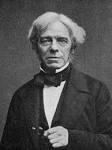
Michael Faraday |
Michael Faraday (technology) Michael Faraday demonstrates electromagnetic induction at the Royal Society.Joseph Henry recognises it at about the same time. Faraday also develops the Faraday Wheel, a homopolar generator. |
|
29 Aug 1842
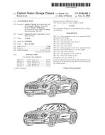
Design patent |
Design patent In 1842, the design patent, a new form of patent was authorized by Act of Congress. The first U.S. design patent was issued for typefaces and borders to George Bruce of New York City on 9 Nov 1842. |
|
29 Aug 1864
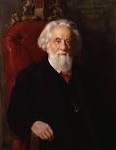
William Huggins |
William Huggins (astronomy) William Huggins is the first to take the spectrum of a planetary nebula when he analyzes NGC 6543. |
|
29 Aug 1865
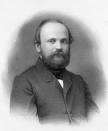
Robert Remak |
death Robert Remak Died 29 Aug 1865 at age 50 (born 30 Jul 1815). Polish-German physician, neurologist and embryologist. While in medical practice, he researched unpaid at university. (As a Jew, he was barred from teaching.) He discovered the fibres of Remak (1830), nonmedullated nerve fibres (1838), and named the three germ layers he discovered of the early embryo: the ectoderm, the mesoderm, and the endoderm (1842). In 1844 he discovered the nerve cells in the heart now called Remak's ganglia and provided the first illustration of the 6-layered cortex. He was a pioneer in the use of electrotherapy for the treatment of nervous diseases. He finally became the first Jew to teach at university (1847), but even promotion to assistant professor in 1859 did not reflect his eminence. |
|
29 Aug 1866
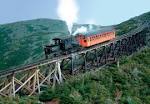
Mount Washington Cog Railway |
Mount Washington Cog Railway In 1866, a public demonstration was given of the first cog railway in the world to show the first half-mile of track at the base of Mount Washington, the highest peak in the Northeast U.S. The Mount Washington Cog Railway eventually ran to the summit of Mount Washington, N.H. giving views of four states, Canada, and the Atlantic Ocean. Invented by Sylvester Marsh of Littleton, N.H., work began on the railway in May 1866 and finished in July 1869 at a cost of $139,500. In 1869, the Cog Railway was an engineering marvel, a new technology of toothed cog gears, rack rails and tilted boilers. A third toothed rail was laid between the steel rails for the wheels. In the present day, it remains in use, the only cog railway still powered by steam. |
|
29 Aug 1868

Christian Friedrich Schönbein |
death Christian Friedrich Schönbein Died 29 Aug 1868 at age 68 (born 18 Oct 1799). German-Swiss chemist who discovered and named ozone (1840) and was the first to describe guncotton (nitrocellulose). He noted ozone appeared during thunderstorms and named the gas ozone for its peculiar smell (ozo is Greek for smell). Later experiments showed that sending an electric current through pure, dry oxygen (O2) creates ozone (O3). His discovery of the powerful explosive called cellulose nitrate, or gun cotton, was the result of a laboratory accident. One day in 1845 he spilled sulfuric and nitric acids and soaked it with a cotton apron. After the apron dried, it burst into flame - he had created nitrated cellulose. He found that cellulose nitrate could be molded and had some elastic properties. It eventually was used for smokeless gun powder. |
|
29 Aug 1876

Charles F. Kettering |
birth Charles F. Kettering Born 29 Aug 1876; died 25 Nov 1958 at age 82. Charles Franklin Kettering was an American engineer whose 140 patents included the electric starter, car lighting and ignition systems. In his early career, with the National Cash Register Co., Dayton (1904-09), he created the first electric cash register with an electric motor that opened the drawer. When he co-founded the Dayton Engineering Laboratories Company (DELCO, with Edward A. Deeds) he invented the key-operated self-starting motor for the Cadillac (1912) and it spread to nearly all new cars by the 1920's. As vice president and director of research for General Motors Corp. (1920-47) he developed engines, quick-drying lacquer finishes, anti-knock fuels, and variable-speed transmissions. |
|
29 Aug 1879
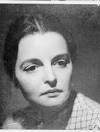
May Smith |
birth May Smith May Smith (died 1968), English experimental psychologist. |
|
29 Aug 1885
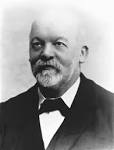
Gottlieb Daimler |
Gottlieb Daimler (technology) Gottlieb Daimler is granted a German patent for the Daimler Reitwagen, regarded as the first motorcycle, which he has produced with Wilhelm Maybach. |
|
29 Aug 1893

Zipper patent |
Zipper patent In 1893, U.S. patent No. 504,038 was issued to Whitcomb L. Judson for a "Zipper Clasp Locker or Unlocker for Shoes." |
|
29 Aug 1907

Quebec Bridge |
Quebec Bridge (technology) The partially completed Quebec Bridge collapses. |
|
29 Aug 1915

Nathan Pritikin |
birth Nathan Pritikin Born 29 Aug 1915; died 21 Feb 1985 at age 69. American scientist, inventor and nutritionist. Pritikin believed that moderate exercise combined with a diet low in fat and high in unrefined carbohydrates reversed his own heart disease discovered in the late 1950's. He opened the Pritikin Longevity Center in 1976 in Santa Barbara, Cal. to treat others with diet and exercise in a clinical setting. |
|
29 Aug 1918

John Herivel |
birth John Herivel John Herivel (died 2011), cryptanalyst and science historian. |
|
29 Aug 1922

Sophie Bryant |
death Sophie Bryant Sophie Bryant (born 1850), mathematician and educationalist (in a hiking accident). |
|
29 Aug 1940

World War II cooperation |
World War II cooperation In 1940, Sir Henry Tizard led a mission of leading British and Canadian scientists to the USA to brief official American representatives on devices under active development for war use and to enlist the support of American scientists. Thus began a close cooperation of Anglo-American scientists in such fields as aeronautics and rocketry. His influence probably made the difference between defeat or victory at the Battle of Britain in 1940. |
|
29 Aug 1959
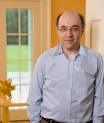
Stephen Wolfram |
birth Stephen Wolfram Stephen Wolfram, British-born mathematician. |
|
29 Aug 1965

Astronaut speaks to aquanaut |
Astronaut speaks to aquanaut In 1965, astronaut Gordon Cooper in orbit 100 miles above the Earth aboard Gemini 5 held a conversation with aquanaut M. Scott Carpenter in Sealab II which was 205 feet below the surface of the Pacific Ocean. It was was first time an astronaut in space spoke with an aquanaut. Gemini 5 splashed down later in the day. |
|
29 Aug 1967

Charles Darrow |
death Charles Darrow Died 29 Aug 1967 at age 78 (born 10 Aug 1889). Charles Brace Darrow was an American inventor who designed the board game Monopoly. He had invented the game on 7 Mar 1933, though it was preceded by other real-estate board games. On 31 Dec 1935, a patent was issued for the game of Monopoly assigned to Parker Brothers, Inc., by Charles Darrow of Pennsylvania (No. 2,026,082). The patent titled it a “Board Game Apparatus” and described it as “intended primarily to provide a game of barter, thus involving trading and bargaining” in which “much of the interest in the game lies in trading and in striking shrewd bargains.” Illustrations included with the patent showed not only the playing board and pieces, cards, and the scrip money. Parker Brothers began mass marketing the game on 7 Feb 1935. |
|
29 Aug 1982

Transglobe expedition |
Transglobe expedition In 1982, the 52,000-mile “Transglobe” expedition completed the first circumnavigation of the world's polar axis. Beginning in 1979, British explorer Ranulph Fiennes with Charles Burton had travelled for three years around the Earth via the Poles circling the earth on longitude 0, the Greenwich Meridian. They had reached the North Pole on 11 Apr 1982, and the South Pole sixteen months before that. Their journey across Antarctica took 67 days, despite the advantages of motorised skidoos. The ocean voyage was undertaken in a craft named Benjamin Bowring. The expedition cost an estimated $18 million. |
|
29 Aug 1982
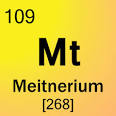
Element 109 |
Element 109 In 1982, an atom of a new element was made. It has been given the proposed name of Meitnerium, symbol Mt. Physicists at the Heavy Ion Research Laboratory, Darmstadt, West Germany made and identified element 109 by bombing a target of Bi-209 with accelerated nuclei of Fe-58. After a week of target bombardment a single fused nucleus was produced. The combined energy of two nuclei had to be sufficiently high so that the repulsive forces between the nuclei could be overcome. The team confirmed the existence of element 109 by four independent measurements. The nucleus started to decay 5 ms after striking the detector. This experiment demonstrated the feasibility of using fusion techniques as a method of making new, heavy nuclei. |
|
29 Aug 1989

Sir Peter Scott |
death Sir Peter Scott Died 29 Aug 1989 at age 79 (born 14 Sep 1909). Sir Peter Markham Scott, son of Robert Falcon Scott (Scott of the Antarctic), was a British naturalist, conservationist, artist, and author. He was a founder of both the Severn Wildfowl Trust (1946, now renamed as the Wildlife and Wetlands Trust) and the World Wildlife Fund. From 1953 to 1970 he hosted the environmental television series Look for the British Broadcasting Corporation. (In 1978, he gave the Loch Ness Monster a scientific name, Nessiteras rhombopteryx. Scottish Member of Parliament Nicholas Fairbairn later anagrammed it: "Monster Hoax by Sir Peter S." ) |
|
29 Aug 1989

Peter Scott |
death Peter Scott Peter Scott (born 1909), conservationist. |
|
29 Aug 1994

Arthur Mourant |
death Arthur Mourant Arthur Mourant (b. 1904), Jersiais hematologist. |
|
29 Aug 2003

Horace W. Babcock |
death Horace W. Babcock Died 29 Aug 2003 at age 90 (born 13 Sep 1912). Horace Welcome was an American astronomer, son of Harold Babcock. Working together, they were the first to measure the distribution of magnetic fields over the surface of the Sun. Horace invented and built many astronomical instruments, including a ruling engine which produced excellent diffraction gratings, the solar magnetograph, and microphotometers, automatic guiders, and exposure meters for the 100 and 200-inch telescopes. By combining his polarizing analyzer with the spectrograph he discovered magnetic fields in other stars. He developed important models of sunspots and their magnetism, and was the first to propose adaptive optics (1953). |